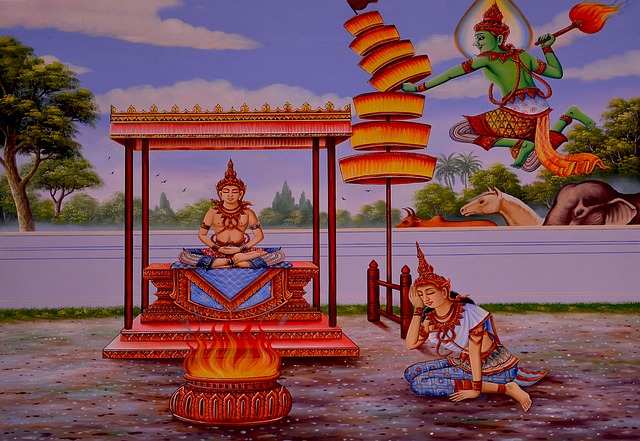For me, the hardest experiences are the ones I don’t choose, but must feel in order to move on.
We all must face them, even though none of us want to.
Letting go is one of the most challenging things we will do—and we can’t get out of it.
It will come as our children grow and leave home. It will arrive when death inevitably takes those we love. And it will happen when the relationships we thought would last a lifetime suddenly end.
Luckily, releasing our tight grip is an ancient practice, which the Buddha began teaching thousands of years ago.
Why do we need to learn how to let go?
Because when we don’t we become victims of our ever-changing reality, and we suffer. If instead we accept what is here and release it, we can experience a greater sense of freedom.
Sounds easy, right? But for some reason, letting go is hard.
Here’s the secret the Buddha knew: before we can let something go, we must first fully experience it.
The Buddha taught that aversion increases our pain. When we ignore our feelings or our reality, that doesn’t make them go away. In fact, it increases their power.
I spent a good chunk of my teens and early adulthood struggling with an eating disorder. One of the main reasons for it was that I didn’t think I should feel as intensely as I did. I was afraid that my deep feelings would overtake me, so I numbed my experience with food (or lack of it)—and my suffering persisted.
In those years, I had no idea it was safe to feel things as they came up. I desperately wanted—and needed—to let go of many memories from my past. But because I was too afraid of feeling them, they continued to haunt me.
It wasn’t until I seriously got into meditation that I began the real process of letting go and healing.
I finally understood that holding onto or turning away from things did not bring me peace.
In Buddhism, we fully accept and surrender to difficult experiences or feelings, rather then denying them. This allows them to flow through us and transform.
Feeling our feelings will not destroy us, but denying them may.
What if we could see letting go as a sacred practice that results in more space and light?
For a Buddhist, the path to freedom is through renunciation (letting go), but we must first fully acknowledge what is present.
Here is a step-by-step method that has helped me to feel and then releasing the feelings and experiences causing me pain. I hope it may be of benefit to you, too.
Let’s keep in mind that even complex things, people and emotions are at their essence, simply an energy wanting to move on through. How about we allow them to flow!
How to let go consciously:
1. Become aware of it.
What does the thing that needs letting go of look like? Is it a person, place, memory, emotion? What does it feel like? Does it have a story it plays on repeat?
As we become aware of something, we can then observe it, which is the basis for Buddhist meditation. Observing means we put all criticisms of the experience aside.
2. Allow it to be here.
I believe this is the most important step in letting go, and many of us fail to do it. Allowing means we stop resisting or trying to change our experience. We welcome it. When we allow ourselves to be as we are, our interior environment shifts from one of fear to one of love.
3. Send love and acceptance.
When I am working with a challenging experience, I repeat, “I love and accept myself [or this experience] completely.” These words soften the intensity of whatever needs releasing. When we stop fighting what is, it can finally run its course and dissolve.
4. Release the story.
Often it’s not the raw experience that’s the problem; it’s the story we have made up about it. If we can witness our feelings and reactions without judgement, we can release the energy (story) behind them. The story prolongs things—so stay out of the mind and kiss the drama of the experience goodbye.
Repeat these steps as many times as necessary until letting go occurs.
~
This practice works for any kind of release—heartbreak, intense feelings, deep grief and more.
Like the Buddha, we all prefer to be in a place of peace.
Each of us is completely capable of undertaking the letting go process. Holding on does not make us feel less pain. It is actually by releasing that we promote our greatest ease.
~
Author: Sarah Norrad
Image: Pixabay
Editor: Toby Israel
~
 Share on bsky
Share on bsky






Read 6 comments and reply